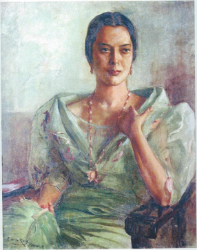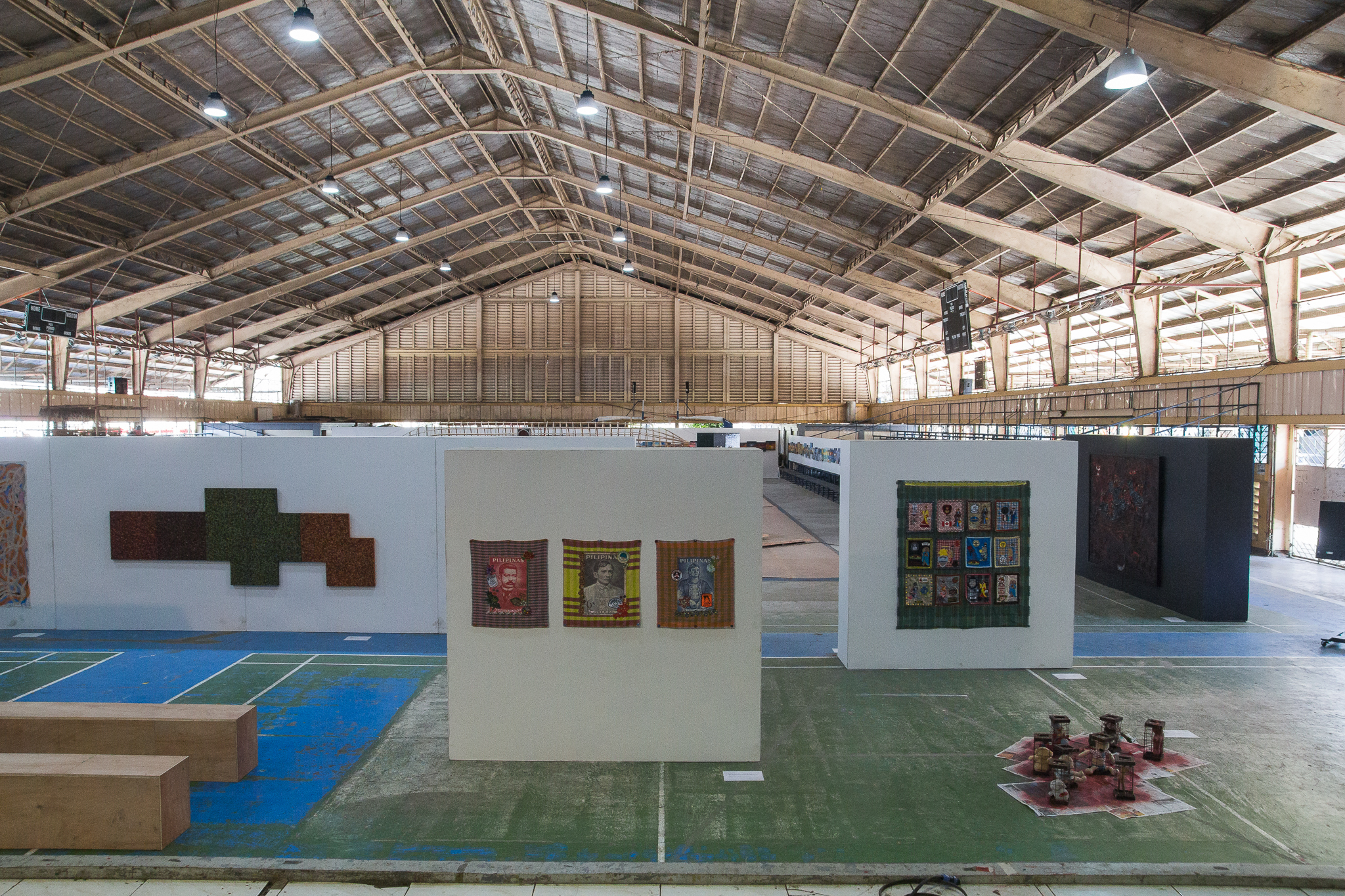
The art of navigation is equally about recognizing where one came from as it is about mapping one’s trajectory ahead. Such is the case of the 15th Viva Excon, a continuation of Visayas’ 28-year-long movement of fostering the region’s art. The biennale transpired in Roxas City, Capiz in November 2018, with the substantial act of scoping out yet another horizon.
The largest of the exhibitions, Bisan Tubig Di Magbalon [Don’t Even Bring Water] is situated in the Roxas Civic Centre, a massive public space in the city center. The title, culled from the Hiligaynon folk song “Dandansoy”, underlies “the aspiration of returning to one’s roots” as articulated in the curatorial statement. The succeeding lines of the song are a reminder that should one get thirsty, there are wells along their path. Aside from being a stone’s throw away from the Panay river and a tricycle ride from the baybay, in Viva Excon’s context, it’s a metaphor for abundance: that the region is rich in art and artists, and cultivating artmaking is a continuous process of growth to be tended to.
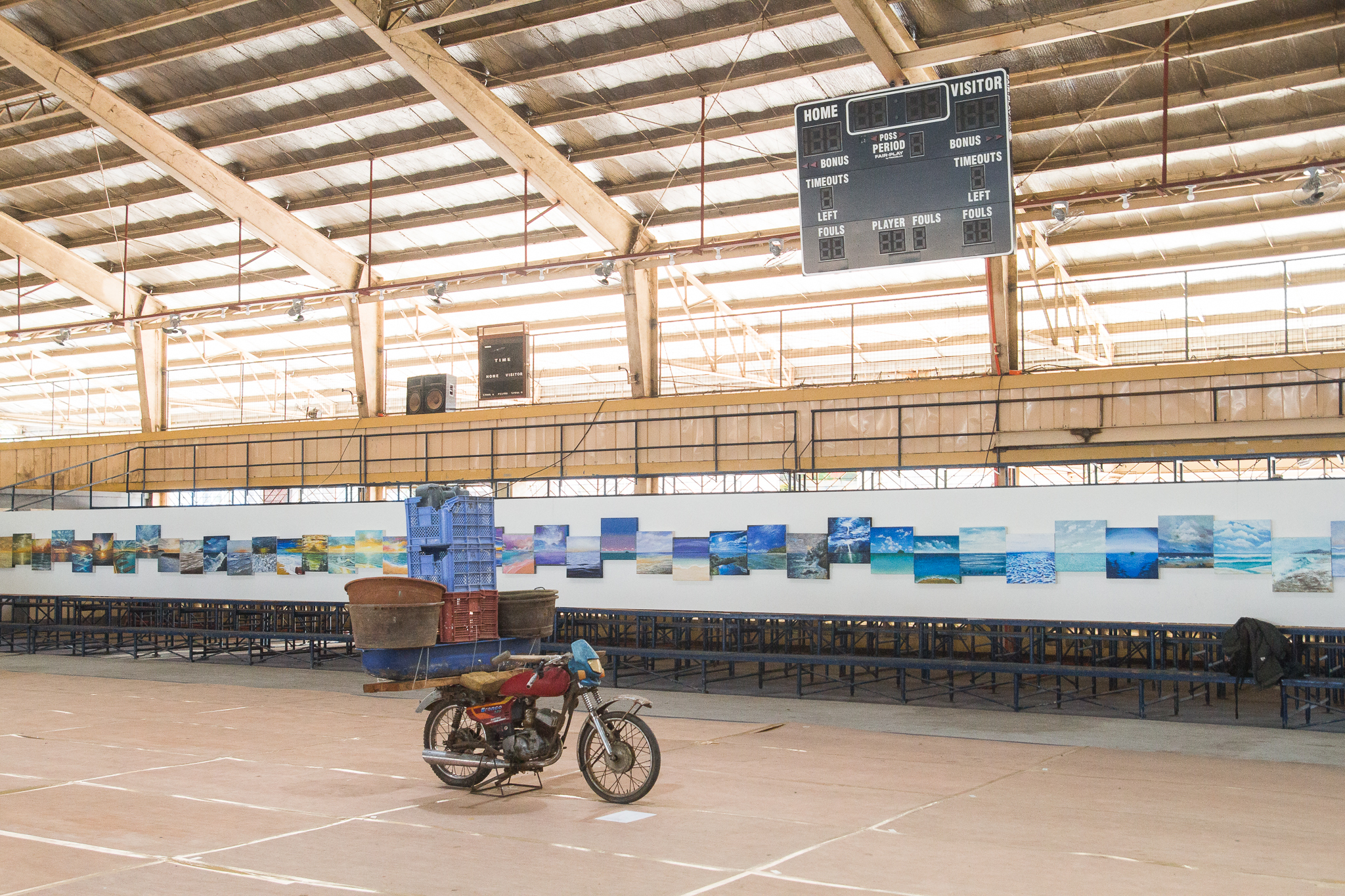
While a single physical space regardless of scale cannot provide a summary of a region that satisfies both participants and spectators, the curation addressed a more fundamental problem, which is a recurring qualm amongst Visayan artists: the scarcity of platforms for recognition by critics and collectors alike, whose gaze is likely turned towards imperial Manila. The answer was the Roxas Civic Centre, which proved to be an effective setting for more than its size alone. Its function as a public space was used to the curatorial agenda’s advantage, especially with regards to the Roxas locals present.
Bisan Tubig Di Magbalon did not deny the fact that the exhibit was in a multi-purpose space where art is the exception rather than the norm; rather, it embraced it. The field recordings of a basketball game blared out of the stacked speakers of Paul Pfeiffer’s work “Untitled”, and was accentuated by the festivities of the opening night which was well-attended both by visitors and locals on November 8, 2018. If anything, the space served as an allegory for the community-oriented nature of Viva Excon itself.
Most of the works were situated on the Roxas Civic Center’s stage and multi-purpose court. Given sports’ influence on Filipino culture, the space invited the public as a space of participation, blurring the lines between audience and spectator. I saw a woman leaning against a Charlie Co painting, cheerily chatting with her companion. It’s a reminder that the codified etiquette typically cultured in Manila’s white cubes is still a construct that is not absolute, but actually rather brittle in the larger context in which artists live.
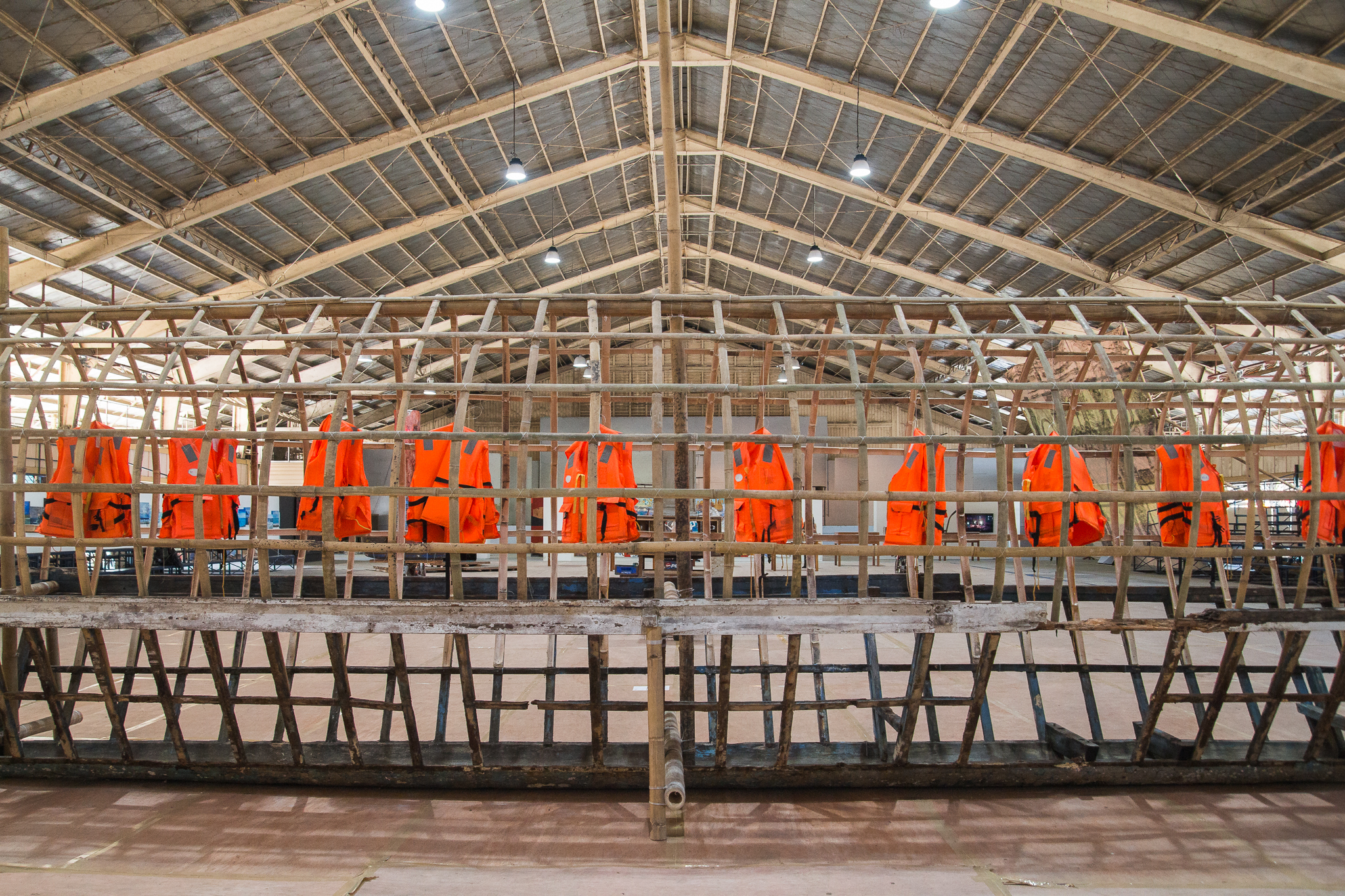
Recollections of Yolanda and other natural calamities echoed throughout, most prominently through Diokno Pasilan’s “D’Stryker: After Yolanda”, an installation of the exposed scaffolding of a boat housing lifejackets. Cebu collective KLMTW’s “Luta - Pasilungan” loomed over the audience: a full-scale depiction of the ruins of a church, symbolically using a material as mundane as dirt as a means of mark-making. Positioned on the nearby bleachers was a work by another artist who practices outside of Manila: “Altar of Pyre” by Baguio artist Santiago Bose. The installation, a shrine made of dry leaves and bamboo meant to combust, was initially made two years after the 1990 earthquake that leveled Luzon. These works attest to the fragility of physical structures, and also how a historical event such as a calamity leaves a lasting mark on a collective consciousness.
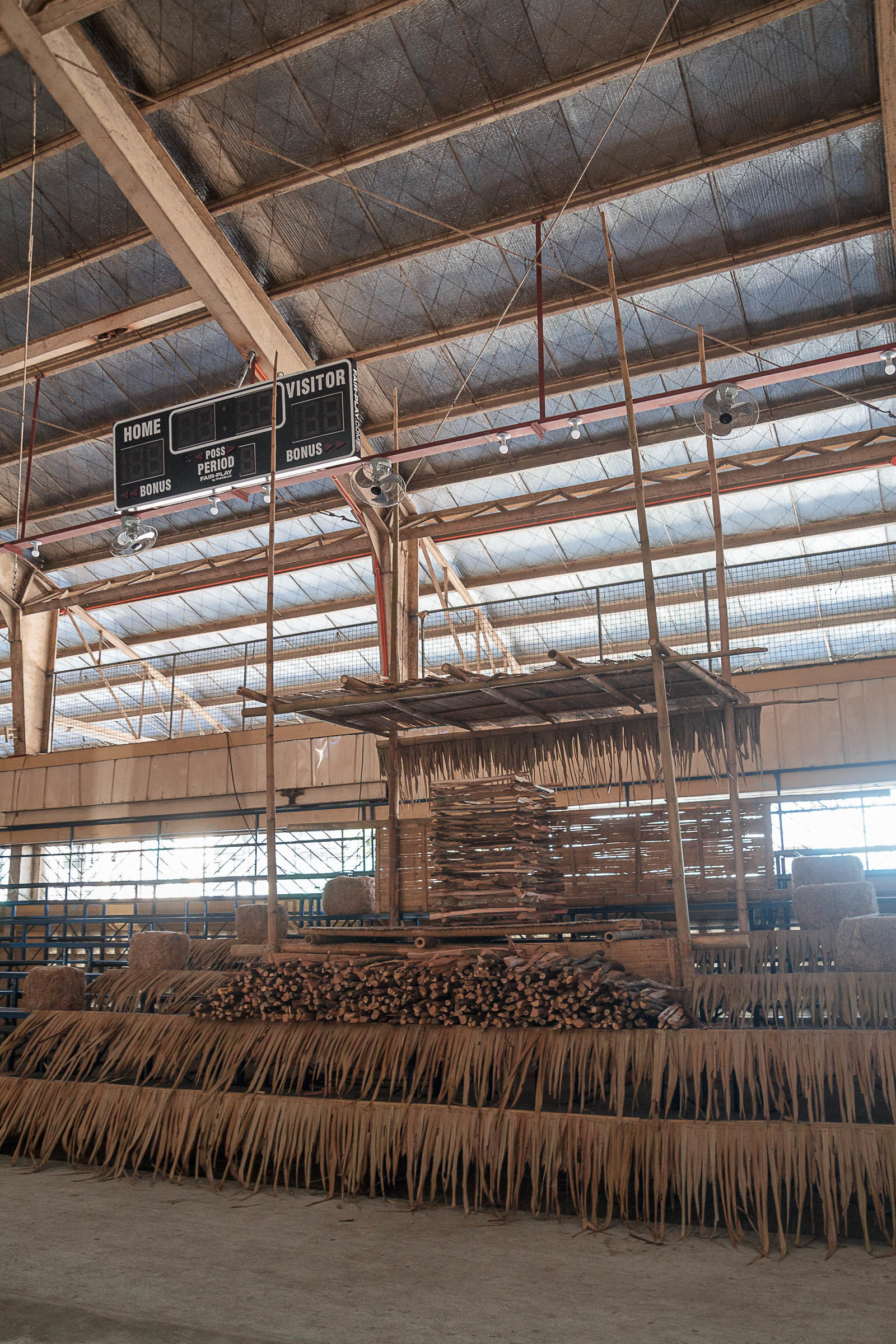
Dagat Kag Dagway is arguably the anchor of the exhibition, lining two of the Civic Centre’s perimeter walls with over 140 paintings. It is the result of an open-call with specific parameters: a specific canvas size, and a certain perspective containing both the sea and the horizon. Lastly, the work has to be made by a Visayan artist.
The aforementioned limits were its strength, resulting in diverse works reflecting different practices and approaches to form. There were hyper-realistic seascapes along with highly-stylized paintings. There were works clearly borne out of formal fine arts training, to works with the bent of art school outsiders. The uniting element was how these works were installed by aligning the depicted horizons along a straight line. It’s a vibrant collection of the different ways of portraying the sea, out of which a dynamic collective notion of Visayan art emerges.
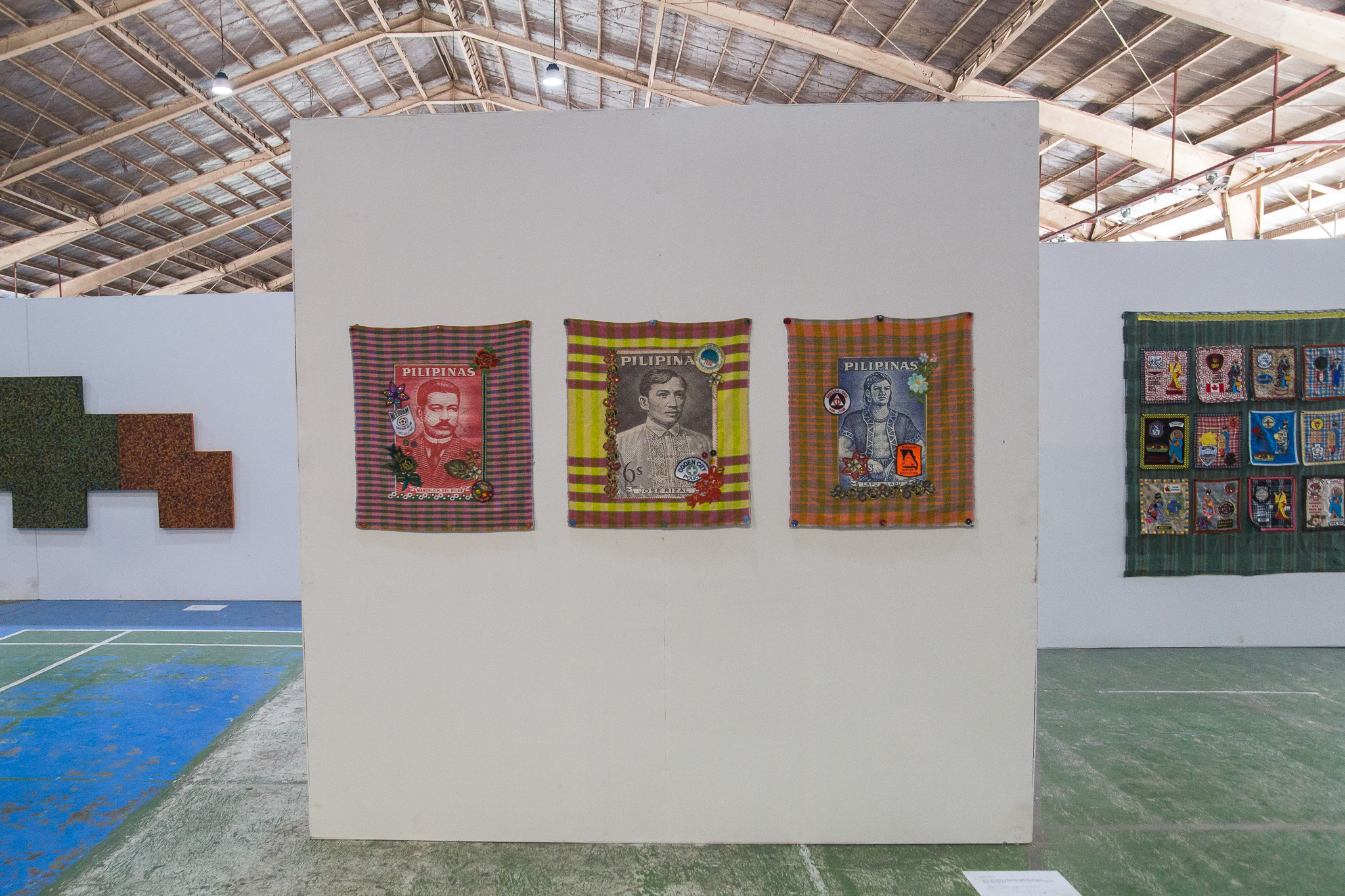
Intergenerational discourse was represented as well. Olive Gloria’s patchworks incorporating Bacolod folk weaving, mass-produced textiles, and patches are a bold feminist statement that combines indigenous and DIY punk sensibilities, speaking to the nature of resistance on different intersectional fronts.
Viva Excon in itself is an act of resistance, borne out of a drive “to address the specific urgencies of Visayan artists and cultural workers persisting in the shadows of Manila’s cultural imperialism”, as stated on its website. Confronting these questions about institutional infrastructure, exhibition spaces, and artist sustenance go hand-in-hand with decentralizing Manila. Where does one begin, but in their own neighborhood?
As the Viva Excon’s various discussions acknowledged, the myriad problems and their solutions are not set in stone. They respond accordingly to disruptions and continuities across time in the milieus of the global art market, national politics and even climate change. The story is not between the rest of the Philippines and Manila, nor Manila and the West. There are temporal threads of histories to be traced from Aparri to Tawi-tawi that need not be as elusive as they’re made out to be.
Bisan Tubig Di Magbalon forgoes the burden of providing an essentialist definition of what Visayan contemporary art is; rather, it takes on the even more formidable effort of articulating what is happening in the region. It anchors a temporal coordinate, from which artists and communities can embark from. After all, the path ahead of Visayan art is in a continuous process of being shaped, and a north star can lead the way even if the landscape shifts as surely as sand on a shore.







